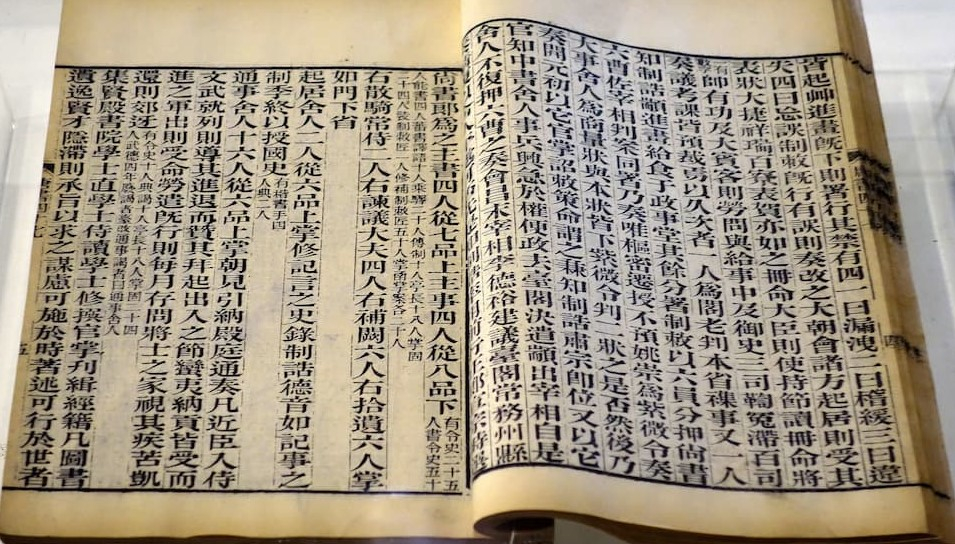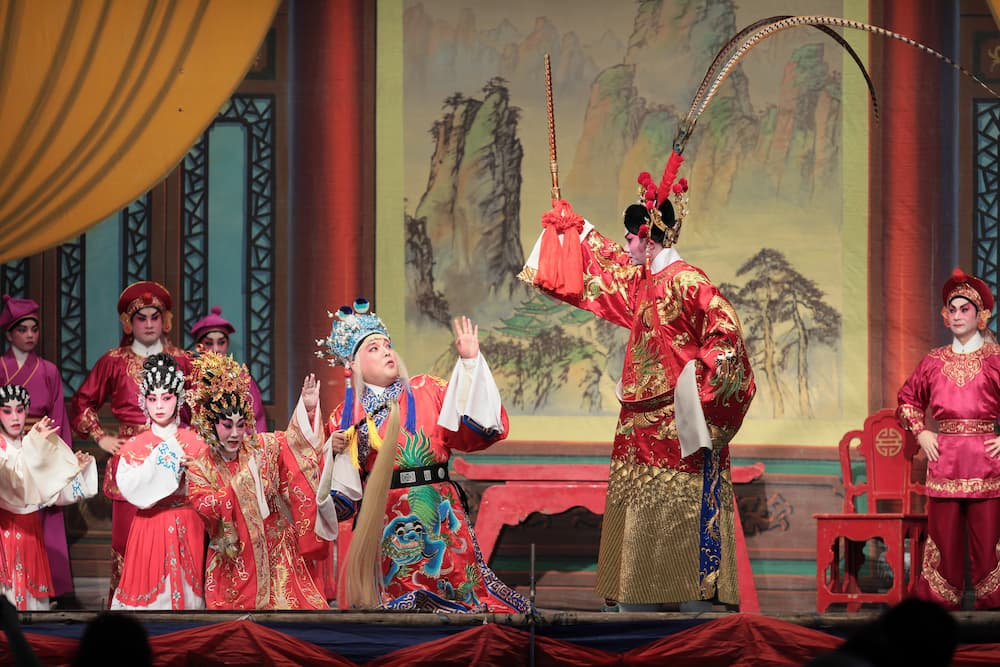
Chinese Historical Classics in Three Minutes
Splendid
Chi Culture
Topic
Chinese Historical Classics in Three Minutes
China boasts a rich and long history, encompassing countless influential figures and significant events. China is renowned as a leading nation in the field of historiography possessing a wealth of historical classics spanning various dynasties. A journey through these historical masterpieces is a must for anyone hoping to gain deeper understanding of Chinese history. Of all the major works, the ten most significant of which are four histories, three comprehensives, two historical commentaries, and one chronicle.
“Four histories” refers to the four earliest complied “official histories” across dynasties in China. They are Records of the Grand Historian, the Book of Former Han (《漢書》), the Book of Later Han (《後漢書》), and the Records of the Three Kingdoms (《三國志》) . The term “official history” originally referred to the most formal and significant historical books. There are in total 25 of them spanning until modern times.
The “Twenty-five Official Dynastic Histories”
The “Twenty-five Official Dynastic Histories” is a collective term for the 25 official historical books in Chinese history. It consists of the “Twenty-four Official Dynastic Histories”: the Records of the Grand Historian, the Book of Han, the Book of Later Han, the Records of the Three Kingdoms, the Book of Jin (《晉書》), the Book of Song (《宋書》), the Book of Southern Qi (《南齊書》), the Book of Liang (《梁書》), the Book of Chen (《陳書》), the Book of Wei (《魏書》), the Book of Northern Qi (《北齊書》), the Book of Zhou (《周書》), the Book of Sui (《隋書》), the History of the Southern Dynasties (《南史》), the History of the Northern Dynasties (《北史》), the Old Book of Tang (《舊唐書》), the New Book of Tang (《新唐書》), the Old History of the Five Dynasties《舊五代史》, the New History of the Five Dynasties 《新五代史》, the History of Song (《宋史》), the History of Liao (《遼史》), the History of Jin (《金史》), the History of Yuan (《元史》), and the History of Ming (《明史》) as well as the addition of the New History of Yuan (《新元史》).
The “Three comprehensives” refers to the Comprehensive Institutions (《通典》), the Comprehensive Records (《通志》), and the Comprehensive Examination of Literature (《文獻通考》). Nine comprehensive studies existed by the time of the Qing dynasty (清代) when there were additional works known as the “Continuation of the three comprehensive studies” and the “Three comprehensive studies of Qing”.
The “Two historical commentaries” refers to the Generality of Historiography (《史通》) and the Comprehensive Definition of Literature and Historiography (《文史通義》).
“One chronicle” refers to the Comprehensive Mirror in Aid of Governance (《資治通鑒》). It records Chinese history in the form of a chronicle. The Historical Events of the Comprehensive Mirror in Their Entirety (《通鑒紀本末》), an adaption based on the Comprehensive Mirror in Aid of Governance, is a historical book written in the form of annalistic records.
There are various genres of historical writing, including:
I. The “biographical history” is a genre of historical writing that focuses on individuals. The “Twenty-five Official Dynastic Histories” belongs to this genre. To be more specific, the Records of the Grand Historian is a comprehensive work in the form of biographical and annalistic accounts. The Book of Former Han and other “official histories” mentioned above are examples of biographical and annalistic accounts that cover specific time periods.
II. The “chronological history” is a genre of historical writing that follows an annalistic order, recording events based on years, months, and days. The Spring and Autumn Annals (《春秋》) and the Comprehensive Mirror in Aid of Governance are good examples.
III. The “Chronicle-style narrative” is a genre of historical writing that focuses on historical events as the main theme. It organises important historical events into separate chapters with independent narratives in chronological order. Many historians have adopted this format of writing historical books under the influence of works like the Historical Events of the Comprehensive Mirror in Their Entirety (《通鑒紀事本末》).
IV. The “institutional history” is a genre of historical writing that focuses on systems and institutions. The Comprehensive Institutions (《通典》) represents the earliest and most authoritative extant political work in this genre. Many others followed suit, creating works known as the “three comprehensives” and “ten comprehensives” in later generations. Hui Yao (會要, a type of historical book documenting the national systems, general history and geography, as well as customs and cultures of a dynasty) and Hui Dian (會典, a type of historical book focusing on documenting legal ordinances and statutes, as opposed to providing a detailed account of historical events) of the previous dynasties also fall into this genre. The works of “institutional history” classify and describe the law and regulatory systems of previous dynasties or a particular dynasty. Compared to the books and annals of “official histories”, the works of “institutional history” tend to be more profound, detailed, and comprehensive in their coverage.
V. The “historical commentary” refers to works that provide criticism on historical books or events. It can be seen as a branch of historiography that deals with theories, methodologies, analysis, and research. The Annotations on the Twenty-Two Histories (《廿二史劄記》) by Zhao Yi (趙翼), the Historical Research on the Twenty-Two Histories (《廿二史考異》) by Qian Daxin (錢大昕), and the Discussion of Seventeen Histories (《十七史商榷》) by Wang Mingsheng (王鳴盛) are renowned for being the three masterpieces of historical research from the Qing dynasty (清代).
In the early 20th century, Xia Zengyou (夏曾佑), a scholar of the late Qing and early Republican period, authored A Textbook of Chinese History (《中國歷史教科書》). It adopted a chapter-by-chapter structure to narrate historical events known as the chapter-based approach. It became a widely adopted genre in the field of historiography. Subsequently, works using new historiographical theories and research methodologies blossomed, including those focusing on Chinese history, period history, cultural history, and thematic history, leading to a more diversified development in the field. After the advocacy of the “New Historiography” by Liang Qichao (梁啟超), Marxist Historiography found its way into China. Following the establishment of the People’s Republic of China, the integration of historical materialism and historical research has witnessed comprehensive and further advancement.
Through the study of these outstanding historical texts spanning dynasties, one can gain an insight into the vast and profound realm of China’s historiography, understand the worldview of the Chinese people, and track the cultural evolution from ancient to modern times. The sheer volume of historical classics makes it possible for readers to select their preferred works to read, either in-depth or getting a general understanding of the content. For instance, some modern historians begin with the “Four Histories”, and then refer to the Comprehensive Mirror in Aid of Governance as a reference to solidify their understanding of ancient Chinese history. By delving into both the old and new versions of Book of Tang and the History of the Five Dynasties, one can attain a comprehensive understanding of the history of the Sui, Tang, and the Five dynasties periods. The Book of Song, being the lengthiest, requires considerable time to read. The History of Ming took 90 years to compile and is considered a masterpiece. To gain a general understanding of the strengths and weaknesses of the “Twenty-four Histories”, Zhao Yi’s Annotations on the Twenty-Two Histories from the Qing dynasty is a convenient reference book for readers.
The Twenty-four Histories
The “Twenty-four Histories”, or the “official histories”, is a collective term for the 24 biographical and annalistic historical books written during ancient Chinese dynasties. Spanning the mythical reign of the Yellow Emperor (黃帝) to the era of the Emperor Chongzhen (崇禎) in the late Ming dynasty, it provides a wealth of content on ancient China’s politics, economy, military affairs, ideology, culture, astronomy, and geography. Please refer to the entry on the “Twenty-five Histories” for more information.
Zhao Yi (1727-1814), with the courtesy name Yunsong (雲崧or耘松) and the sobriquet Oubei (鷗北), was born in Yanghu (陽湖, present-day Changzhou [常州]), Jiangsu Province (江蘇). In the 26th year of Emperor Qianlong’s reign (乾隆, 1761), Zhao achieved the highest level of the imperial examination and was originally ranked first as Zhuangyuan (狀元). Emperor Qianlong, however, citing the abundance of Zhuangyuan from the Jiangsu-Zhejiang region (江浙地區) and the lack of such achievements from Shaanxi Province (陝西) in the Qing dynasty, changed the ranking and declared Wang Jie (王傑), a candidate from Shaanxi who originally ranked third (Tanhua, 探花), as Zhuangyuan. Zhao thus became Tanhua and was assigned the role of compiler in the Hanlin Academy (翰林院) to participate in the compilation of the Combined Overview of Comprehensive Mirrors in Aid of Governance (《通鑒輯覽》). Zhao served in several positions, including the magistrate of Zhen’an (鎮安) in Guangxi Province (廣西) and Guangzhou (廣州), as well as the military defence commissioner in Guizhou Province (貴州). In his middle years, Zhao chose to resign from the government service to assume a teaching role in Anding Academy (安定書院) while dedicating himself to writing for more than four decades.
Zhao Yi’s Annotations on the Twenty-Two Histories discusses the historical books that constitute the “Twenty-four Histories”, covering works from the Records of the Grand Historian to the History of Ming. During that period, both the Old Book of Tang and the Old History of the Five Dynasties were not yet officially recognised as “official histories”, whence the name “Twenty-two Histories”. The book is written in a note-taking style and comprises 36 volumes along with an addendum, featuring 609 entries following the order of the “Twenty-four Histories”. It was completed in the 60th year of Emperor Qianlong’s reign (1795). A defining characteristic of the book is that it pays attention to the historical development of each history, discussing their strengths and weaknesses. It covers aspects such as the compilation processes, the compilation methods, pros and cons of the methodologies, the sources of information, and the authenticity of each history. It also addresses discrepancies and contradictions between different histories through textual criticism. For example, an entry in Volume 31 of the History of Ming states, “Among the recent histories, except for the old and new History of the Five Dynasties compiled by Ouyang Xiu (歐陽修), the History of Liao is brief, the History of Song is disorderly, and the History of Yuan is hasty. Only the History of Jin is elegant and concise, making it somewhat remarkable. However, none of them are as comprehensive as the History of Ming.” The Annotations on the Twenty-Two Histories serves as an introduction to reading the official histories, providing a general understanding of the significant historical events across past dynasties.
Bibliography:
- Zhang Shunhui (張舜徽), Representatives of Ancient Chinese Historical Records (《中國古代史籍舉要》). Wuhan: Hubei People’s Press (武漢:湖北人民出版社), 1980.
- Wang Shumin (王樹民), Introduction and Review of Twenty-Four Histories and Comprehensive Mirror in Aid of Governance (《史部要籍解題目》). Beijing: Zhonghua Book Company (北京:中華書局), 1981.
- Qian Mu (錢穆), Masterpieces of Chinese Historiography (《中國史學名著》), 1973, compiled into Complete Works of Mr. Qian Binsi (《錢賓四先生全集》). Taipei: Linking Publishing Company (台北:聯經出版公司), 1998.
- Review of Chinese Historiography Masterpieces (《中國史學名著評論》) authored by Chen Yuan (陳垣) and edited by Chen Zhichao (陳智超). Beijing: The Commercial Press, 2014.
- Chow Kai-wing (周佳榮), Quick Reading of Chinese Historical Classics across Dynasties (《中國歷代史學名著快讀》). Hong Kong: The Commercial Press, 2016, Beijing: Peking University Press (北京大學出版社), 2018.








